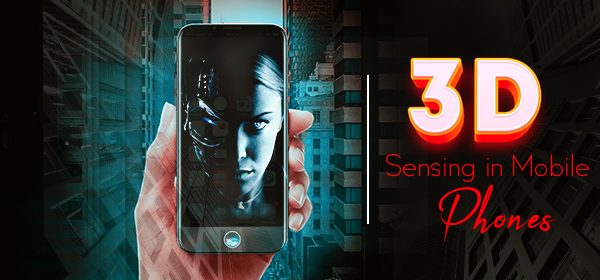Walking with the latest eCommerce trends will let you gain incredible benefits. Ecommerce and its trends are something that is evolving bigger and bigger each day. Companies now have realized the relevance of including the latest trends in their app platform.
The number of customers relying on online shopping apps is very high than before. Even during the pandemic time, most people are engaged in shopping from leading eCommerce platforms.
Online shopping platforms help people in getting a better lifestyle with products reaching their doorsteps. Undoubtedly, the eCommerce market will be rising their bars for so long utilizing the novel trends amid and after the pandemic.
Let’s look at the latest eCommerce trends that Boost up online shopping.
#1. mCommerce
It is visible that the majority of the content we read or view is via mobile screens. So how online shopping has treated these changing viewers and media?
Smartphones have become the first convenient medium for people today for shopping and almost all utilities. As a result, more than 70 percent of online shoppers prefer using their smartphone for locating nearby stores, comparing prices, etc.
Mobile screens act as an intimate touchpoint to the product and people love to view newer and latest products right at their fingertips.
These wireless devices enable people to feel free to review products and order them when they wish to. People receive instant notifications and pop-ups while using a mobile phone.
Other scopes of mcommerce include retailers who can integrate tools and responsive design to their portals enticing more potential customers. Companies without a responsive mobile commerce platform are missing their opportunities for growth and success.
#2. Logistic Trends & Diverse Shipping Options
The major development concerning the shipping options is that products now reach wider destinations. Once you order a product, it indicates the exact locations of each stage of your product journey.
Novel shipping strategies help companies in fulfilling global dispatches quicker than before. Amazon has started drone delivery systems in the USA that can find the shortest route to deliver products.
Organizing an effective end-to-end tracking will gauge more customers into your app. Another strategy that is widely used today is offering free shipping.
Some may feel it as a loss, but you can use this strategy well by saving your profits. Such free shippings will grab more users in action. Thus, it is foreseen as a long-term trend to provide seamless shipping options for the customers.
#3. Voice Search is Dominating
Today, People are reluctant to type lengthy descriptions about products they wish to buy. Voice searching is a boon for customers. Voice search is all set to experience explosive growth due to the increased conversions of Google Assistant and Alexa.
It is suggested that people type about 30-35 words in a minute. But saying about voice search, it can go up to 100 words. Using a voice search for shopping is like saying the list to your friend who will reply in no time. These devices are so intelligent that it can even remind you about essential items necessary for you.
Users can get quick results for their queries even while they are driving, engaged in house chores, etc. It is important that brands must focus on ears rather than eyes.
Studies suggest that in 2020, about 30% of customers wouldn’t even use their mobile screens to shop online. However, optimizing the online store for a voice search will be a must-have facility in the coming years.
Read Also : 15 Best Ecommerce Apps 2020
#4. Enhanced Images and Videos
Customers cannot touch the fabric of their desired cloth. But images help them visualize the product and like really wearing it. So, it is necessary that eCommerce platforms have to stay away from poor stock images that can instantly bring down your brand. Original photos of the products make it more credible among users.
Videos of products, especially electronic gadgets entice more customers to order and try out the product. Images give a clear picture of the product and the videos can portray the intent and usage of the products directly to the users.
Both images and videos act as decisive factors in a confident buying practice. It must be of optimum quality with appropriate voice-overs and subtitles if needed.
#5. Marketing Automation
Automation is ruling every sector today. The same is happening in ecommerce trends. About 49% of companies now use automation in their marketing procedures.
Starting from email marketing to win-back campaigns, automation tools are helping well in boosting up online stores. Such tools automatically showcase newer products relevant to the customer’s purchase history, pop-ups regarding their preferred brands or previous orders, special offers, etc.
Automation has widened the company’s capability to strengthen its presence starting from the order, tracking, and till delivery. Once a customer visits the website, he/she will be offered tailored emails of the products they likely to buy. Such automation tools are unstoppable in marketing concerns and many companies have foreseen it successfully.
#6. Increased Subscription Models
Subscription is now an effective way to gauge more customers into your app platform. Organizing a monthly or yearly subscription is very common today on eCommerce platforms. Such strategies not only attract customers but also increase their retention rate.
Customers with a subscription can engage in a long-term relationship with the brands and the eCommerce platform they use. They get converted into a recurring purchaser rather than one-time purchases or yearly ones.
Models like Flipkart plus for Flipkart users, Prime membership for Amazon users, etc are taking an unexplainable leap of success today.
Ecommerce platforms use these by giving discounts and even free shipping to the subscribed members. Sellers acquire a good amount as subscription charges and customers get exclusive benefits and privileges in return. Subscription strategies strengthen an ongoing smooth relationship between sellers and customers.
#7. Chatbots
Don’t you receive pop-ups in the sites you visit that are awaiting your click? Yes, chatbots are those dedicated computer programs that fulfill user needs and demands. They sometimes
- Collect basic details of the User
- Provide product recommendations to the buyers
- 24/7 Customer Support.
There are many more functions that are now replaced by these exciting chatbots. Customers will feel like they are directly chatting with the seller, record their needs, and complete their purchases.
Customers love to chat with a chatbot expert offering useful tips and advice for their better living. Chatbots even suggest outfits based on the customer’s likes and previous orders.
So setting an active messaging chatbot is not at all a bad idea but will make your brand more visible and retain in customer minds.
#8. Influencer Marketing is so Relevant
Influencer marketing is now inevitable in a successful eCommerce strategy. Your brands become more credible among users through dedicated endorsements by influencers.
Finding the best influencer for your brand is not that painful. You can even choose a popular person loving your brand to post genuine reviews on your products.
Most companies now choose celebrities or social media influencers as their brand ambassadors that will gauge an organic audience for your brand.
Leading platforms select people who have a strong and valuable online social search for representing their brands. The famous cricketer Virat Kohli, with the highest number of followers on Instagram and even, in reality, appearing in Flipkart ads are enticing countless customers today.
#9. Social Commerce
Programmatic advertising is so successful via social media today. Users receive abundant ads with attractive photographs and even animated GIFs on social media sites now. Companies have recognized the importance of social media among buyers and started using it wisely.
Apart from likes, shares, and comments, these social media platforms are themselves transforming into an online shopping portal. About 55% of people purchase products based on social media posts themselves.
Companies like Facebook have organized a dedicated place for entrepreneurs to sell and display their products to users. Instagram shopping is also considered as one of the latest ecommerce trends and giving focuses on direct purchase from the social media posts itself.
Social commerce avoids the lengthy steps in the purchase and smartly envisages the purpose of buying things directly. Companies can receive greater ROI and visibility among potential and new customers.
This process is also further optimized by active chatbots and autofill options so far. Social media is creating giant leaps each day and likewise, social commerce too can.
#10. Augmented Reality is very much Closer to the Mainstream
Augmented Reality is driving transformation and innovation to greater heights. With many retailers refining their AR offerings, we are witnessing Augmented Reality tech taking a huge stride towards eCommerce platforms.
Product visualization is something very appealing today with the advent of AR in the same. The latest feature of visualizing furniture in homes by the app developed by IKEA fulfills the customers with uncompromising confidence and desire in buying these pieces.
Likewise, some devoted apps enable customers to wear the selected fabric and check whether it is comfortable and beautiful. Adding AR features will increase customer engagement, retention, and WOW factor for making customers more sure about their pick.
Research suggests that customer engagement has increased by 66%. Introducing AR features in your eCommerce under proper professional guidance and reap amazing benefits.
Read Also : 15 Must Have Features in a Marketplace App
Conclusion
Surely, eCommerce will grow bigger and better in the upcoming years. Trends like Automation, AR tools will entice more users and add valuable customer experience.
The better the technology trends, the greater the sales, and credible customer base. Thus, embrace the best trends for your eCommerce platform and gain boundless benefits.






























![Why Teachers are Important for Educational App Development [12 Reasons]](https://wp.redbytes.in/wp-content/uploads/2017/10/12-Reasons-Teachers-are-Important-for-Educational-App-Development-1.jpg)

